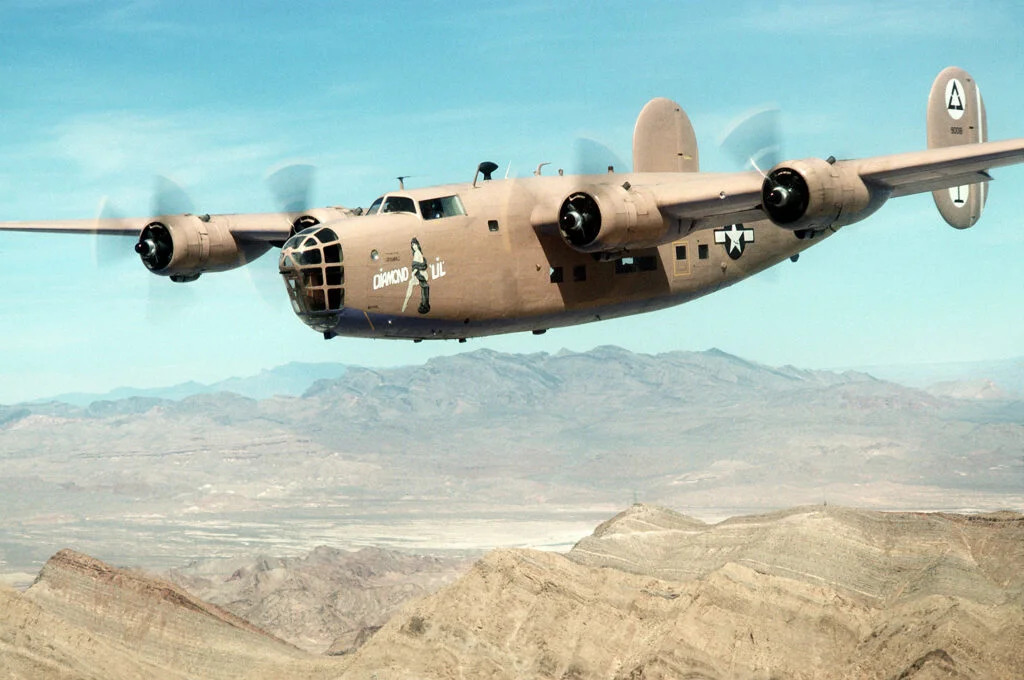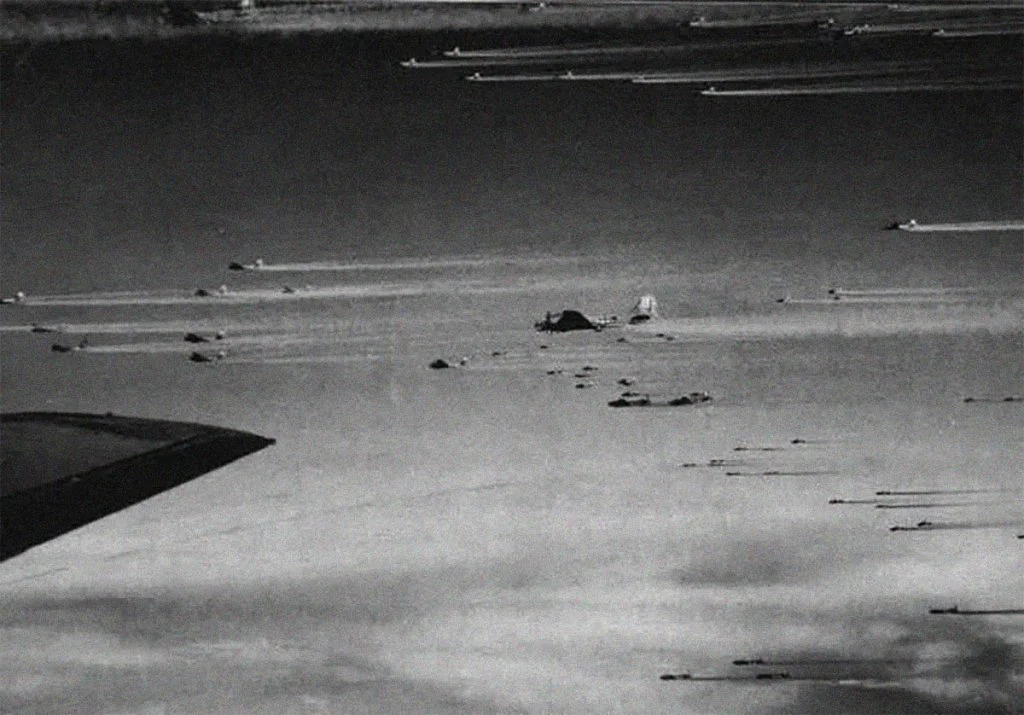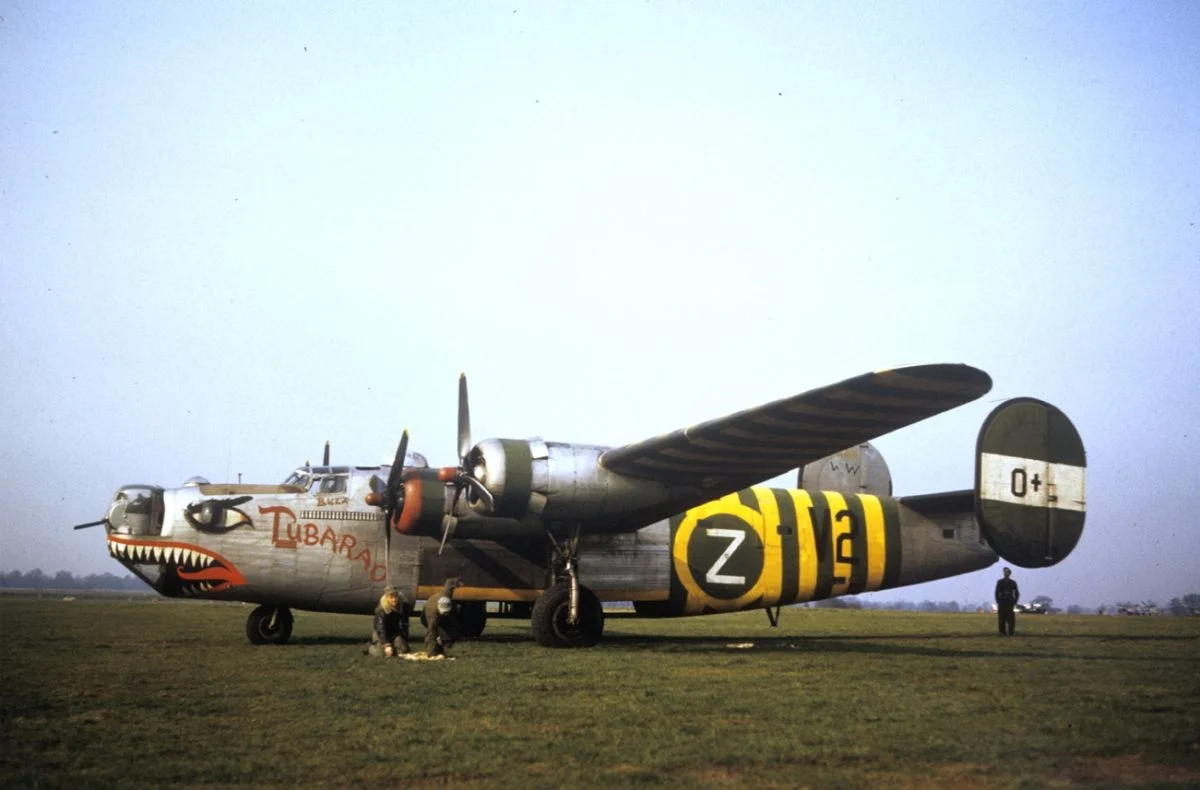During the Second World War, the United States Army Air Forces (USAAF) faced significant challenges in organising large bomber formations for missions over Europe. One innovative solution to this problem was the use of Assembly Ships.
These specialized aircraft, often referred to as “Judas Goats,” played a crucial role in guiding and assembling bomber formations, ensuring mission success and enhancing operational efficiency.
Origins and Development of Assembly Ships
The concept of Assembly Ships originated from the urgent need to solve a significant logistical problem that the USAAF faced during World War II. As bomber groups expanded in size, the complexities of organizing and launching large formations of aircraft became increasingly pronounced.
Commanders quickly realized that existing procedures were insufficient to handle the scale and demands of modern aerial warfare, leading to frequent delays, confusion, and even accidents. This critical issue prompted the USAAF to devise a dedicated system to streamline the assembly process of these vast bomber formations.

In the early stages, the USAAF relied on ad hoc methods to manage the assembly of bomber groups. This typically involved using standard bombers or lead aircraft to guide the formation, but these methods proved to be inadequate. The confusion often arose because these lead aircraft were not easily distinguishable from the rest of the bombers, especially in adverse weather conditions or low visibility.
The need for a more effective solution became increasingly apparent as the scale of bombing missions grew.
The turning point came when the USAAF decided to repurpose older bomber models, such as the B-24 Liberator and the B-17 Flying Fortress, specifically for the task of guiding and organising bomber formations.
These aircraft, no longer fit for front-line combat due to wear and technological advancements, found new life as Assembly Ships. This decision not only maximized the use of existing resources but also provided a practical solution to the logistical challenges faced by the bomber groups.

Transformation
The transformation of these bombers into Assembly Ships involved extensive modifications. Engineers began by stripping the aircraft of all unnecessary weight, which included removing all armament and heavy armour plating.
This reduction in weight enhanced the aircraft’s speed and manoeuvrability, critical factors for the role they were to play. The interiors of these planes received an overhaul as well. Technicians installed additional radio equipment to ensure robust and reliable communication channels between the Assembly Ship and the bombers it was coordinating.
This allowed for real-time guidance and adjustments, further streamlining the assembly process.
Bright Colours
One of the most distinctive features of the Assembly Ships was their exterior paintwork. The USAAF understood the necessity of making these aircraft easily identifiable, even from a distance or in poor visibility. To achieve this, each Assembly Ship was given a unique and highly visible paint scheme.

These designs often featured bold patterns, such as polka dots, stripes, and checkerboards, painted in bright colours like red, yellow, and black. This vivid appearance ensured that bomber crews could quickly and easily identify the Assembly Ship amidst the multitude of aircraft, thus reducing the risk of confusion and ensuring a smoother assembly process.
The development of Assembly Ships also involved a significant amount of tactical planning and procedural refinement. Commanders and engineers worked together to establish standard operating procedures for the use of these aircraft.
This included determining optimal flight paths, assembly areas, and communication protocols. These procedures had to be meticulously planned to account for the varying conditions and potential challenges that could arise during a mission, such as weather changes, enemy interference, or mechanical issues.
Training also played a crucial role in the development and effectiveness of Assembly Ships. Crews selected for these aircraft received specialized training to familiarize them with their unique role and the specific equipment and procedures they would be using.

This training ensured that they could perform their duties efficiently and effectively, contributing to the overall success of the bomber formations they guided.
Operational Use and Tactics
The operational use of Assembly Ships began well before the bombers took to the skies. Preparations for a mission started hours in advance, with meticulous planning and coordination. The Assembly Ship, chosen specifically for each mission, underwent thorough pre-flight checks to ensure all modifications and additional equipment were in optimal condition.
The ground crew and pilots reviewed the mission plan, focusing on the assembly point and timing to synchronize the departure and assembly process seamlessly.
On the day of a mission, the Assembly Ship took off ahead of the main bomber force, often at dawn to maximize daylight for the assembly process. As it ascended, the crew initiated contact with the ground control and the incoming bombers, establishing a communication link crucial for the operation’s success.
The Assembly Ship circled a predetermined assembly area, a location carefully chosen based on geographical landmarks or coordinates, making it easily identifiable to the approaching bombers.

As bombers lifted off and navigated towards the assembly point, the Assembly Ship’s role as a visual and communicative beacon became critical. Its distinctive, high-visibility paint scheme allowed bomber crews to spot it quickly, even from a considerable distance.
The Assembly Ship maintained a consistent altitude and speed, acting as the anchor point for the bombers to form up around. The crew used radio transmissions to relay instructions, providing guidance on altitude adjustments, speed changes, and positioning within the formation.
The assembly process was highly orchestrated. Bomber pilots relied on both the visual cues from the Assembly Ship and the precise instructions communicated over the radio. The Assembly Ship’s crew directed individual aircraft into their designated positions within the larger formation, ensuring each bomber slotted into place without disrupting the overall structure.
This process required immense skill and coordination, as the bombers arrived at different times and from various directions.
Post Formation
Once the formation began to take shape, the Assembly Ship continued to orbit, making minor adjustments to keep the group tight and organized. The goal was to achieve a cohesive and efficient formation as quickly as possible, minimizing the time spent in the vulnerable assembly phase.

The Assembly Ship’s crew played a critical role in this phase, using their extensive training and experience to make real-time decisions that optimized the assembly process.
After the formation was complete, the Assembly Ship performed a critical final check, ensuring that all bombers were in their correct positions and that the formation was ready to proceed to the target. At this point, the Assembly Ship signalled the lead bomber, often with a predetermined visual signal or a final radio confirmation, indicating that the formation was ready to depart.
The Assembly Ship then broke away, its primary mission accomplished, and headed back to base or to a secondary role as needed.
During the return leg of the mission, the Assembly Ship often resumed its guiding role, especially if the bombers faced adverse weather conditions or enemy interference. It would reassemble the bombers into a formation for a coordinated and safer return to base.
The visibility of the Assembly Ship, combined with its communication capabilities, provided an additional layer of safety and organization during this critical phase.

The operational use of Assembly Ships significantly enhanced the efficiency and safety of bomber missions. By providing a clear focal point for assembly and maintaining robust communication throughout the process, these aircraft reduced the chaos and confusion that previously plagued large-scale bombing operations.
The tactics employed by the Assembly Ships, from their distinctive paint schemes to their precise flying patterns and communication protocols, were essential in achieving these improvements.
Furthermore, the role of the Assembly Ship extended beyond mere assembly. Its presence and guidance contributed to the overall discipline and coherence of the bomber formations, which were crucial for both offensive effectiveness and defensive integrity.



